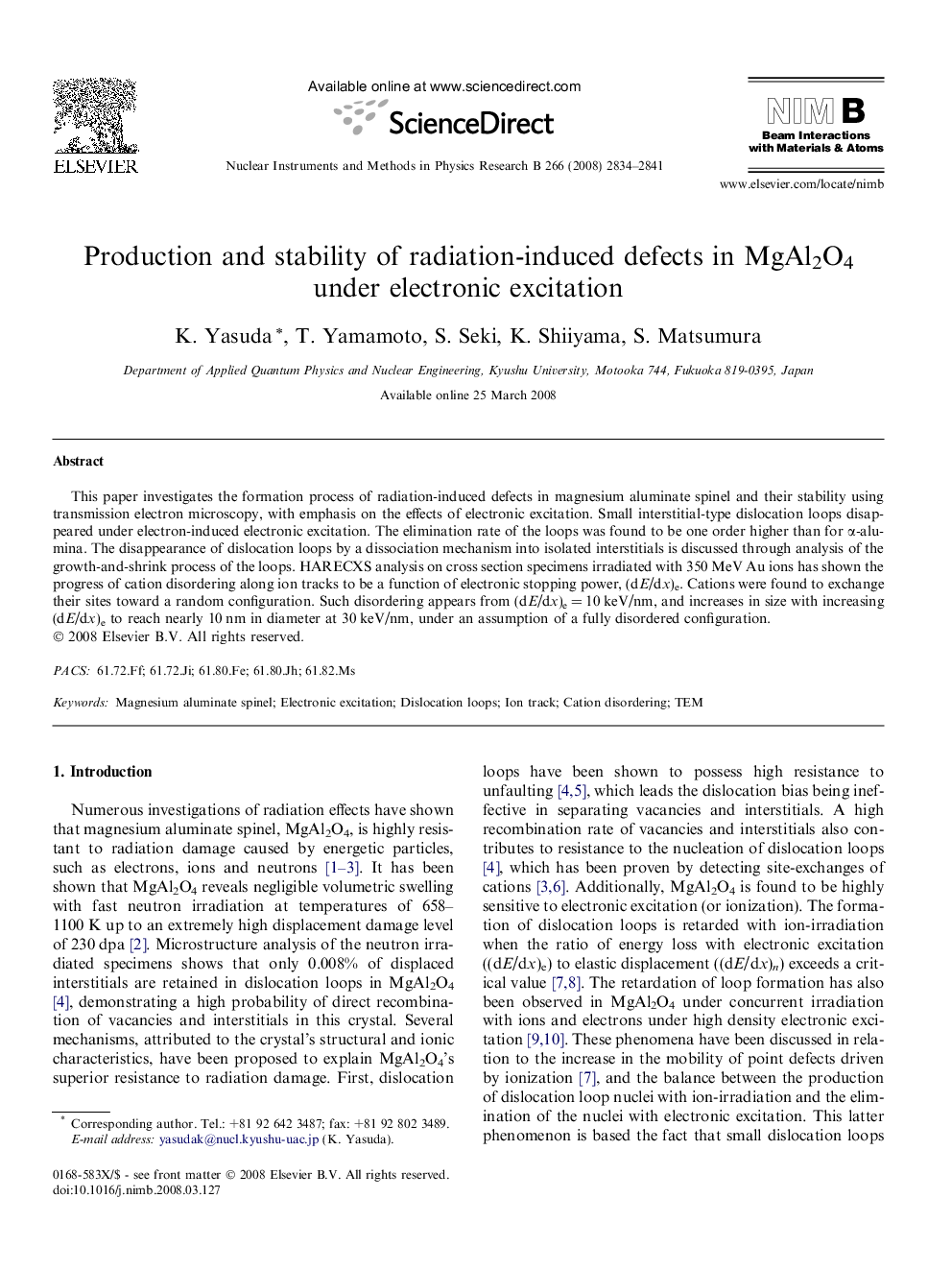| Article ID | Journal | Published Year | Pages | File Type |
|---|---|---|---|---|
| 1686025 | Nuclear Instruments and Methods in Physics Research Section B: Beam Interactions with Materials and Atoms | 2008 | 8 Pages |
Abstract
This paper investigates the formation process of radiation-induced defects in magnesium aluminate spinel and their stability using transmission electron microscopy, with emphasis on the effects of electronic excitation. Small interstitial-type dislocation loops disappeared under electron-induced electronic excitation. The elimination rate of the loops was found to be one order higher than for α-alumina. The disappearance of dislocation loops by a dissociation mechanism into isolated interstitials is discussed through analysis of the growth-and-shrink process of the loops. HARECXS analysis on cross section specimens irradiated with 350 MeV Au ions has shown the progress of cation disordering along ion tracks to be a function of electronic stopping power, (dE/dx)e. Cations were found to exchange their sites toward a random configuration. Such disordering appears from (dE/dx)e = 10 keV/nm, and increases in size with increasing (dE/dx)e to reach nearly 10 nm in diameter at 30 keV/nm, under an assumption of a fully disordered configuration.
Keywords
Related Topics
Physical Sciences and Engineering
Materials Science
Surfaces, Coatings and Films
Authors
K. Yasuda, T. Yamamoto, S. Seki, K. Shiiyama, S. Matsumura,
